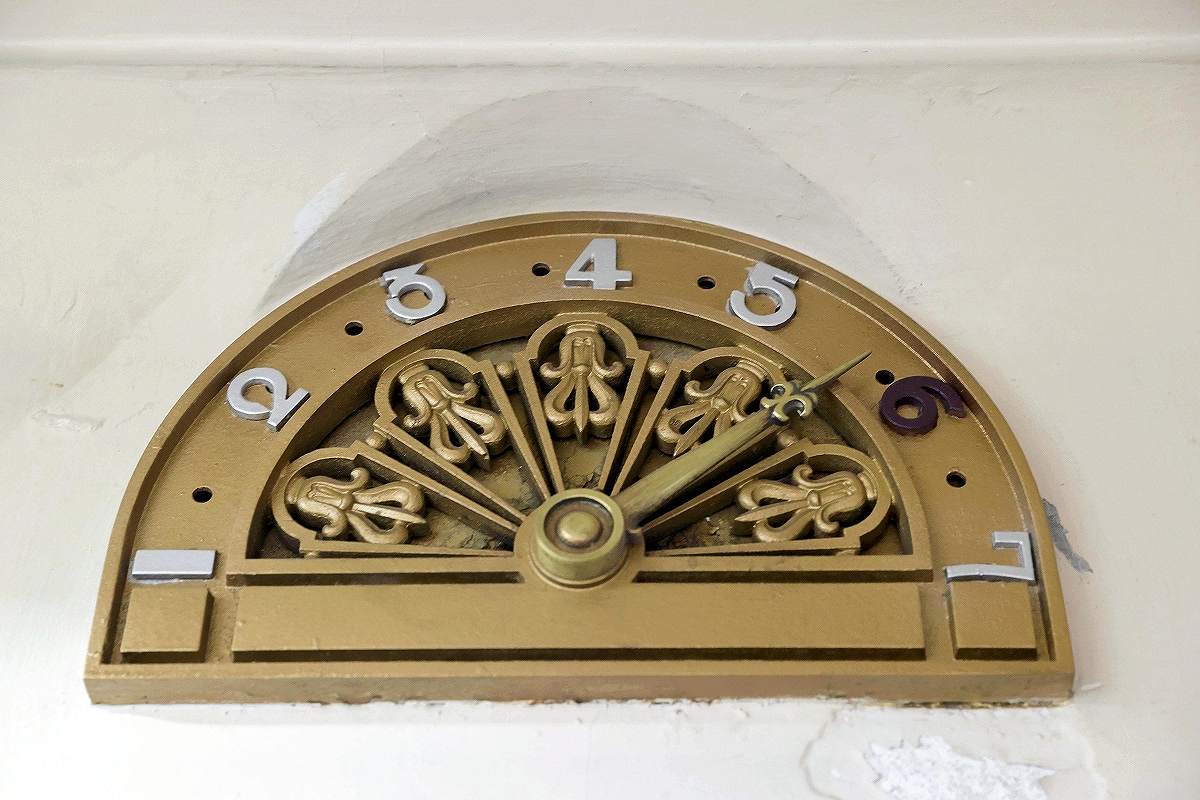Ginza Building Retains Classical, Elegant Features Such as Manual Elevator for Over 90 Years

The main structure of the Okuno Building, left, and the annex are connected inside.
12:01 JST, May 20, 2024
In Tokyo’s Ginza district lined with modern office buildings, the Okuno Building has retained its classical and elegant features, despite standing for more than 90 years. The building attracted attention as an upscale apartment complex during the early days of the Showa era (1926-1989). Now it serves as a base for people involved in fields such as architecture and art.
The building was built in 1932, and the annex was constructed next to it two years later. Ginza Apartment, as it was called back then, was six stories tall and built of reinforced concrete, which was rare at the time. Dwelling units had a floor space of about 3.5 tsubo (about 11.5 square meters) each.
The building also had a large communal bathroom in the basement and a lounge on the roof. Residents of the cutting-edge apartment complex are said to have included film and music celebrities.
Okuno Building owner Tsuguo Okuno, 80, showed me inside the building. The first thing that caught my attention was the elevator, which is believed to have been the first privately-owned residential elevator in Japan.
The elevator’s door must be opened and closed manually, and inside the elevator is an accordion gate, like you would see in an old films. A semicircular panel and a needle above the elevator displays which floor the elevator is at.

Even the elevator floor number indicator has a classical look.
The building survived air raids during World War II and was converted into an office building during the period of high economic growth when demand for office space increased. Although the building’s exterior and facilities became outdated during the Heisei era (1989-2019), the elegant appearance attracted galleries and antique shops as tenants. All 69 rooms are still occupied.
“I have never seen such a beautiful place anywhere else,” said Kiyoko Tosaki, 79, who runs Gallery Kobo in the building. She said the wooden floor, shelves and a uniquely-shaped window locks have not changed since the building was constructed.

Kiyoko Tosaki’s office retains much of its original appearance.
I noticed rut-like dents in the center of the hallway, showing how it was worn away as people walked up and down it for more than 90 years. Still, the hallway has not been repaired as tenants said they prefer it the way it is. When tiles come off, tiles in the same design are ordered.
“Okuno Building tenants are attached to this place. I want to keep the building as long as there are people who want to stay here,” Okuno said. The building will continue to be a living part of Ginza’s history.

The floor of the hallway is worn down where people have walked up and down it for more than 90 years.
***

Okuno Building
Address: 1-9-8 Ginza, Chuo Ward, Tokyo
Access: A three-minute walk from Ginza-Itchome Station on the Yurakucho Line.
Memo: The building originally had six stories, but the seventh floor was added around 1958-1962.
Related Tags
"Features" POPULAR ARTICLE
-

Sanrio to Open Museum in Yamanashi Pref. Dedicated to Founder, Exhibits Include Hello Kitty, Other Characters
-

Autumn Foliage Surrounds Visitors to Tokyo’s Showa Kinen Park
-

My Daughter No Longer Speaks to Me, But I Want to See Her and My Grandchild
-

Kumamoto: Public Bath Refurbished as Library Where You Can Chat, Take Photos
-

Frozen Vegetables: Demand Rises for Convenient, Tasty Domestic Produce
JN ACCESS RANKING
-

Tokyo Economic Security Forum to Hold Inaugural Meeting Amid Tense Global Environment
-

Keidanren Chairman Yoshinobu Tsutsui Visits Kashiwazaki-Kariwa Nuclear Power Plant; Inspects New Emergency Safety System
-

Imports of Rare Earths from China Facing Delays, May Be Caused by Deterioration of Japan-China Relations
-

University of Tokyo Professor Discusses Japanese Economic Security in Interview Ahead of Forum
-

Japan Pulls out of Vietnam Nuclear Project, Complicating Hanoi’s Power Plans

























